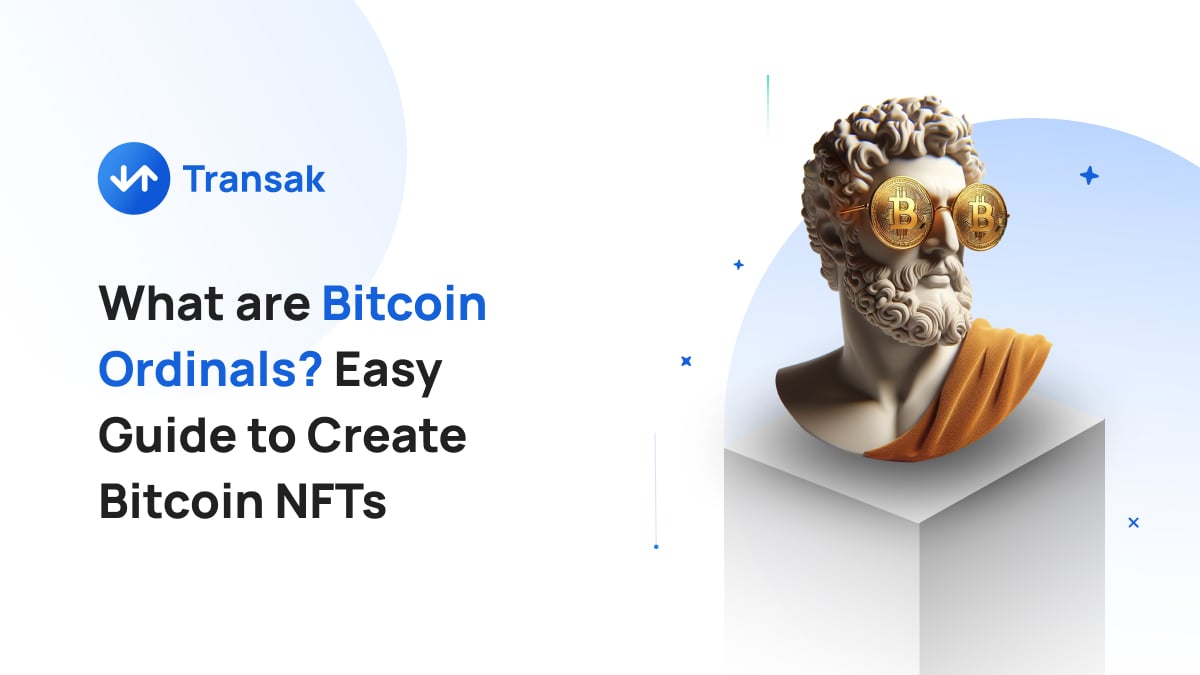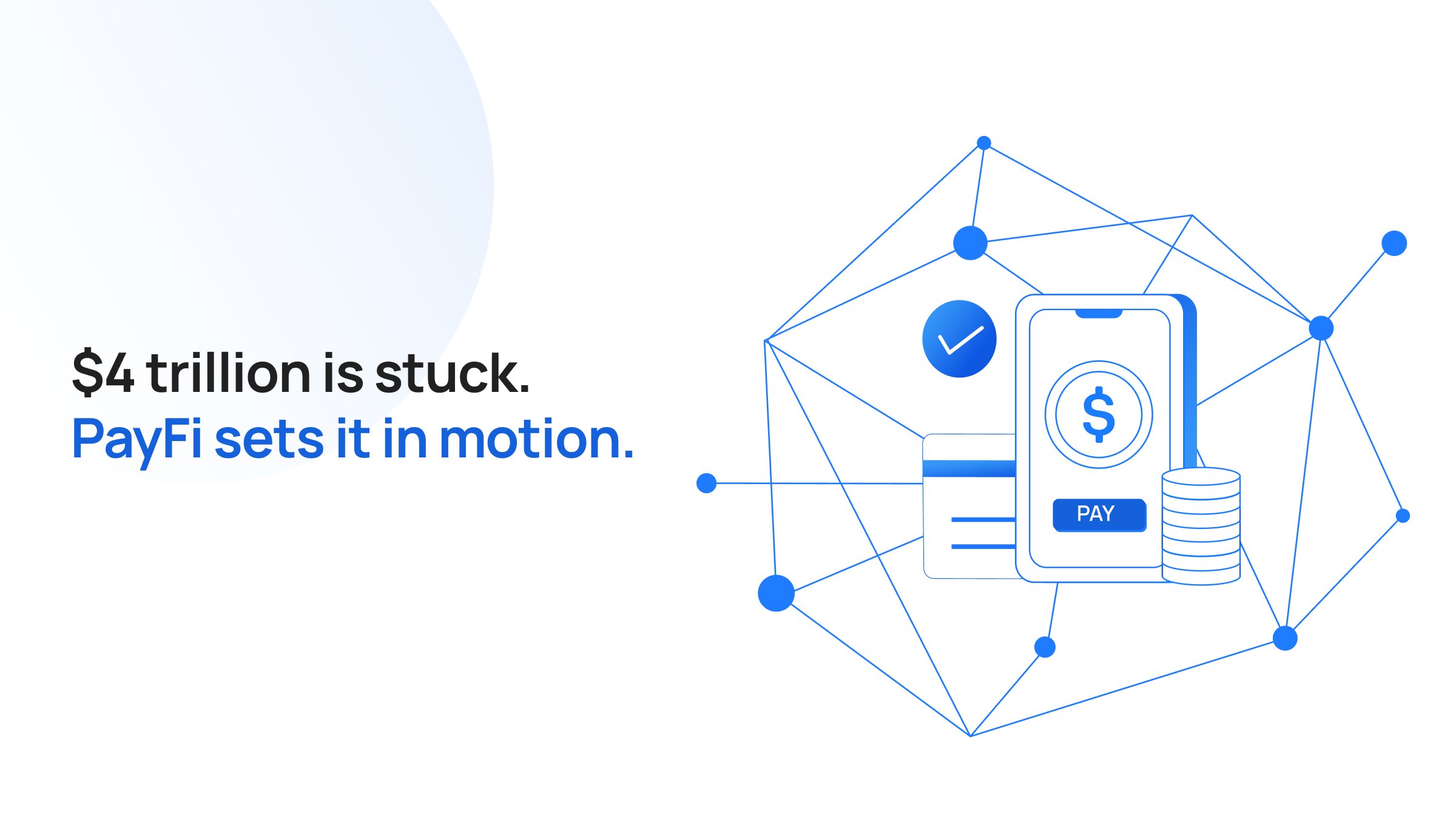The Bitcoin network, known for its simple focus on digital money and person-to-person payments, has recently seen a new and interesting upgrade — the Ordinals protocol.
The change comes with Bitcoin Ordinals, a new feature that lets people add different kinds of data, including pictures, videos, and even memes, right onto the smallest units of Bitcoin, called Satoshis (1 BTC = 100,000,000 satoshis).
This new development is a bit controversial but very intriguing. It mixes the ideas of regular, interchangeable money with unique digital items, making people wonder what this means for the future of Bitcoin and NFTs.
In this article, we will learn about Bitcoin Ordinals and their impact on the Bitcoin ecosystem.
Background
Bitcoin, created in 2009, pioneered the concept of decentralized digital currency. Its secure, transparent blockchain became the foundation for other innovations like smart contracts and NFTs.
NFTs, non-fungible tokens, exploded in popularity in 2021, offering ownership of digital art, music, and even virtual land on different blockchains like Ethereum. Despite its pioneering role, Bitcoin itself was not originally designed to support these advanced features directly on its blockchain.
The introduction of the Ordinals protocol changed the narrative. Now, Bitcoin Ordinals bridge these two worlds by allowing NFTs to reside directly on the Bitcoin blockchain itself.
What are Bitcoin Ordinals?
Bitcoin Ordinals, frequently referred to as Bitcoin NFTs are satoshis (smallest unit of Bitcoin) minted and embedded/Inscribed with rare pieces of information such as “text, images or other forms of digital information or assets”.
The Ordinals NFT is a product of the Ordinals protocol developed by Casey Rodarmor and launched on the Bitcoin mainnet in January 2023.
Imagine Bitcoin as a giant, public ledger where everybody can see how many coins each person owns. Normally, all bitcoins are the same, like identical coins in a jar. But now, Bitcoin Ordinals come along and let you do something special: take a single coin from that jar and etch a picture, a video, or even a funny meme right onto it! That single, marked coin becomes unique, just like a one-of-a-kind collectible, although it's still part of the same jar.
This is basically how Bitcoin Ordinals turn regular "fungible" bitcoins into special "non-fungible" NFTs right on the Bitcoin blockchain itself!
So, Bitcoin Ordinals are like little artistic stamps you can stick on individual BTC units, making them different and collectible, all within the same familiar Bitcoin system.
How Do Bitcoin Ordinals Work?
Ordinals, a novel feature on the Bitcoin network, utilize the underlying transaction structure of Bitcoin to achieve something unique — inscription.
The protocol leverages the Taproot upgrade and Segregated Witness (SegWit) technology in Bitcoin. Taproot makes Bitcoin transactions more efficient and private, while SegWit resolved transaction malleability issues and improved block capacity. Together, they facilitate the efficient recording of additional data on the blockchain — a key aspect of the inscription process.
The Inscription Phase
When someone creates an "inscription transaction," they are essentially attaching data, which could be considered akin to an NFT (Non-Fungible Token), directly to specific units of Bitcoin known as Satoshis. The data embedded in these transactions can range from simple text and images to more complex forms like entire video games.
This process is made possible through the use of Bitcoin's existing transaction mechanisms. They are stored in Taproot script-path spend scripts. The process involves creating a Taproot output with the inscription content and then spending the output, which reveals the inscription content on the blockchain. This content is wrapped in an "envelope," a type of no-op that doesn't change the script
When an inscription is made, the data is embedded within a standard Bitcoin transaction. This transaction, like any other on the Bitcoin network, includes the necessary information such as the sender, the recipient (which could be the sender themselves if they are just inscribing data), the amount of Bitcoin (Satoshis) being transacted, and any transaction fees. The innovation, here, is the addition of the inscription data, which becomes permanently affixed to the specified Satoshis.
The Validation Phase
Miners play a crucial role in the Ordinals ecosystem. They confirm these inscription transactions and add them to the Bitcoin blockchain. As a reward for their work, miners receive transaction fees in Bitcoin. This incentivizes miners to include these inscription transactions in the blocks they mine. The result is a self-sustaining system where the Bitcoin network reliably keeps track of these Ordinals, ensuring their permanence and verifiability.
Differences Between Bitcoin Ordinals And Traditional NFTs
Feature |
Bitcoin Ordinals |
Traditional NFTs |
|
Underlying Blockchain |
Bitcoin |
Smart contract-based chains |
|
Data Storage |
Directly on-chain |
Off-chain storage with links on the blockchain |
|
Security |
Arguably more robust due to Bitcoin's PoW |
Varies depending on the specific blockchain |
|
Immutability |
Permanent and unchangeable |
Potentially changeable depending on platform rules |
|
Scarcity Potential |
Vast due to billions of Satoshis |
Limited by platform supply or creator specifications |
|
Transaction Scalability |
Potential issues with large data payloads |
Generally faster and more efficient |
|
Environmental Impact |
Increases Bitcoin's energy consumption |
Varies depending on the underlying blockchain |
|
Legal Implications |
Unclear and evolving |
Developing frameworks, may differ from platform to platform |
|
Fees |
Higher for large data inscriptions |
Generally lower, but can vary based on network congestion |
|
Examples of Content |
Text, images, video games, even memes |
Primarily art, music, collectibles, virtual land |
Examples of Prominent Bitcoin Ordinals NFTs
There are alot of Bitcoin Ordinals within the Bitcoin ecosystem. Here are some of the prominent ordinals:
Taproot Wizards
Developed by web3 enthusiast Udi Wertheimer, Taproot Wizards is a collection of unique NFTs where each wizard was drawn onto a satoshi by Udi.
Ordinal Punks
Ordinal Punks is a series of 100 unique and rare Bitcoin Ordinals that pays tribute to the ever-known NFT collection “CryptoPunks”.
TwelveFolds
Developed by Yuga Labs the founders of the prominent NFT collection “BAYC”. TwelveFolds is a limited edition unique NFT collection based on the Bitcoin ordinals which was formed using generative AI.
Advantages of Bitcoin Ordinals
Bitcoin Ordinals offer several advantages, the following are some of its primary advantages.
Security
Bitcoin Ordinals leverage the well-established and rigorously tested Proof of Work (PoW) consensus mechanism employed by the Bitcoin blockchain. This mechanism has proven remarkably robust over its twelve-year history, repelling numerous malicious attacks and demonstrating exceptional resilience against double-spending attempts and other security vulnerabilities.
Consequently, Ordinals inherit this undeniable pedigree of security, arguably surpassing the protections offered by many other NFT networks, some of which may still operate on less battle-tested consensus models or encounter security challenges inherent to their specific architectures.
Immutability
The inscription process embeds Ordinals indelibly within the fabric of the Bitcoin blockchain. Once inscribed, an Ordinal becomes permanently etched onto the distributed ledger, impervious to censorship or manipulation. Unlike traditional forms of digital assets that may reside on centralized servers or mutable databases, Ordinals benefit from the inherent immutability of the Bitcoin blockchain.
This immutability guarantees the unchangeability and perpetual accessibility of inscribed data, offering unrivaled confidence in the provenance and authenticity of Ordinals.
Scarcity Potential
The Bitcoin ledger is huge, containing billions of tiny parts called Satoshis. Ordinals let people attach unique digital items, like art, to these Satoshis. This immense quantity of units translates to a significant capacity for generating scarcity in a quantifiable manner. By tying these items to specific Satoshis, Ordinals ensure each item is unique and verifiably rare.
This is great for creators who want to make special things and collectors who want rare items, leading to a new world of unique digital collectibles.
Disadvantages of Bitcoin Ordinals
While Bitcoin Ordinals offer exciting possibilities for on-chain NFT inscription, concerns regarding transaction scalability must be addressed. The inclusion of large data payloads within inscription transactions inevitably increases their size and complexity, potentially leading to
Higher Transaction Fees
Miners prioritize transactions offering greater economic incentive, meaning larger Ordinal transactions may require significantly higher fees to secure timely processing. This could potentially price out individual creators and limit Ordinal adoption by cost-sensitive users.
Blockchain Bloat
The continuous inscription of large data could contribute to increased blockchain size and necessitate regular protocol upgrades to accommodate rising storage demands. This could exacerbate existing concerns regarding Bitcoin's scalability and potentially impact node bandwidth requirements.
Impact of Ordinals on the Bitcoin Ecosystem
Bitcoin Ordinals has triggered a heated debate within the Bitcoin community.
Some see them as a natural evolution, increasing Bitcoin's utility and attracting new users. Others worry about increased blockchain bloat and potential misuse of spam or harmful content.
Proponents
While Bitcoin has primarily been a digital currency, the Ordinals protocol expands its functionality. This diversification can attract a broader audience to the Bitcoin ecosystem, including those interested in digital collectibles and unique digital assets, potentially increasing the overall adoption and appreciation of Bitcoin.
One of the ingenious aspects of Ordinals is that they don't require any changes to Bitcoin's underlying protocol. This means that the core principles and operations of Bitcoin remain intact, while still allowing for this new functionality.
The introduction of Ordinals can inspire further technical development and exploration within the Bitcoin ecosystem. It shows that there's still room for growth and innovation, even on a blockchain as established as Bitcoin.
Opponents
One of the major concerns is about "blockchain bloat." Ordinals allow for the inscription of large amounts of data onto individual satoshis. As more of these inscriptions are added to the blockchain, it increases the overall size of the Bitcoin blockchain, potentially leading to longer sync times and increased storage requirements for nodes. Some folks worry that this could make running a full node more challenging and centralized, as only those with significant resources could afford to do it.
There's a sentiment that Ordinals might distract from Bitcoin's original purpose – to be a decentralized digital currency. The idea of turning satoshis into NFT-like assets might seem like a departure from this vision, leading to debates about whether such features are appropriate on the Bitcoin network, which has traditionally prioritized simplicity and security.
There are also questions about the technical implications and potential security risks of Ordinals. Anytime you add new ways of using a blockchain, you introduce new variables that could, potentially, be exploited. While the Ordinals protocol doesn't change Bitcoin's core protocol, the way it's being used is new territory, and with that comes a degree of uncertainty.
How to Send and Receive Bitcoin Ordinals NFTs
Sending and receiving Ordinals, which are essentially NFT-like inscriptions on individual satoshis in the Bitcoin blockchain, involves a process that is somewhat different from typical Bitcoin transactions. A crucial aspect of handling Ordinals effectively is the use of the "coin control" feature in Bitcoin wallets.
Regular wallets without coin control can't distinguish between a standard satoshi and an inscribed one. This differentiation is crucial for handling Ordinals, as it ensures the unique inscribed satoshi is correctly identified and not mixed with regular satoshis.
Without coin control, there's a risk of accidentally spending the inscribed satoshi in a regular transaction, as the wallet would treat it as any other BTC unit.
Sending Ordinals
- Wallet with Coin Control Feature: The sender must use a Bitcoin wallet that supports the coin control feature. This feature allows users to manually select which specific satoshis to spend in a transaction.
- Identifying the Inscribed Satoshi: The sender needs to identify the specific satoshi that contains the Ordinal inscription they wish to send. This is where the coin control feature becomes essential, as it enables the sender to pinpoint and choose the exact inscribed satoshi.
- Creating the Transaction: Once the inscribed satoshi is selected, the sender creates a Bitcoin transaction in the usual manner, but with the specific selection of the inscribed coin.
- Transaction Fees: As with any Bitcoin transaction, there will be a transaction fee. The sender must ensure that the fee is sufficient for the transaction to be processed in a timely manner.
Receiving Ordinals
- Compatible Wallet: The receiver also needs a wallet that supports the coin control feature and the ability to recognize and display Ordinal inscriptions.
- Receiving the Transaction: Upon receiving the transaction, the receiver's wallet, with the proper functionality, will identify and segregate the inscribed satoshi from regular satoshis.
- Verification: The receiver should verify the inscription to ensure they have received the correct Ordinal.
List of Wallets with Coin Control for Ordinals NFT Support
Here’s a list of Bitcoin wallets that come with the coin control feature:
How to Create Bitcoin NFTs (Ordinals)? A Step-by-Step Guide
Step 1: Set Up a Taproot-Enabled Bitcoin Wallet
- Choose a Wallet: Find a Bitcoin wallet that supports Taproot, which is necessary for Ordinals.
- Installation: Download and install the wallet on your device.
- Backup: Securely back up your wallet, usually by writing down a recovery phrase.
Step 2: Acquire Bitcoin
- Purchase Bitcoin: You can buy Bitcoin from Transak directly into your BTC wallet from over 185 countries using popular payment methods like credit cards, debit cards, and Apple Pay. Alternatively, look for a “Buy” option in your installed wallet — Transak is integrated with several major cryptocurrency wallets.
- Transfer to Wallet: Transfer the purchased Bitcoin to your Taproot-enabled wallet.
Step 3: Create an Ordinal Inscription
- You can create an Ordinal inscription by installing Bitcoin Core. Find the guide here.
- Alternatively, use simple third-party tools to inscribe content on sats;
- Broadcast Transaction: The tool will create a Bitcoin transaction that includes your inscription. Broadcast this transaction to the Bitcoin network.
- Pay Fees: There will be
Step 4: Confirmation
- Wait for Confirmation: Your inscription will need to be confirmed by the Bitcoin network. This can take time depending on network congestion and the fee paid.
- Verify Inscription: Once confirmed, you can use the same or similar tools to verify that your inscription exists on the specified satoshi.
Conclusion
The Ordinals protocol introduces a new layer of digital rarity on Bitcoin, functioning as a foundation for unique digital assets on the Bitcoin blockchain. This approach marks a significant evolution from Bitcoin's original use case as a digital currency.
Perhaps the most underrated aspect of this protocol is that it allows for the creation and ownership of non-fungible tokens (NFTs) directly on the Bitcoin blockchain, without the need for a separate layer or token standard like Ethereum's ERC-721.
As with any innovative technology, the integration of digital rarity on Bitcoin through the Ordinals protocol is met with both enthusiasm and skepticism. Proponents highlight the security and robustness of the Bitcoin network, while critics point to potential drawbacks such as increased energy consumption and the impact on Bitcoin's primary functions. The long-term implications of this development on Bitcoin's ecosystem, its users, and the broader digital asset market remain to be seen.
For more information, visit transak.com or follow on twitter.com/transak.






